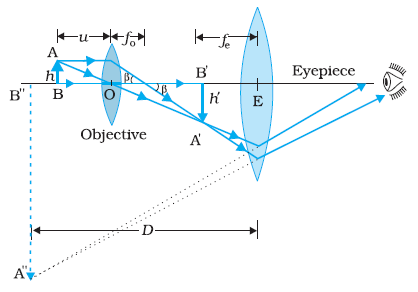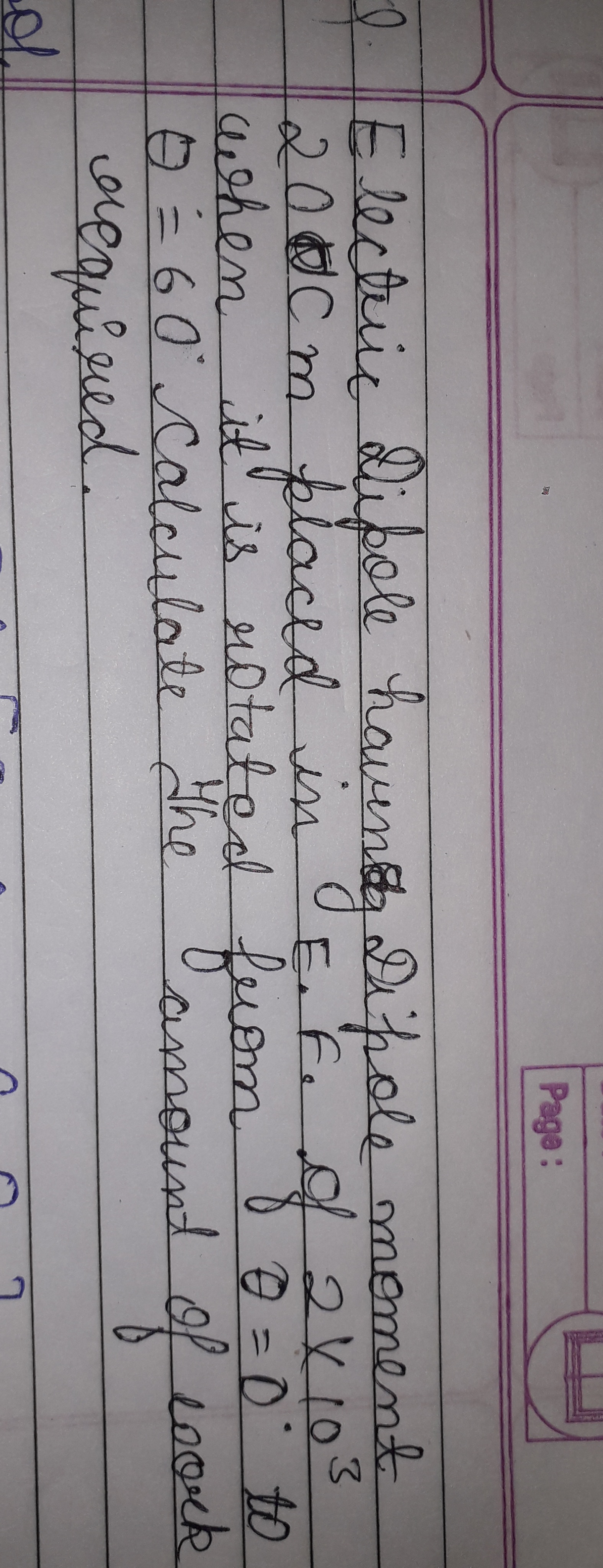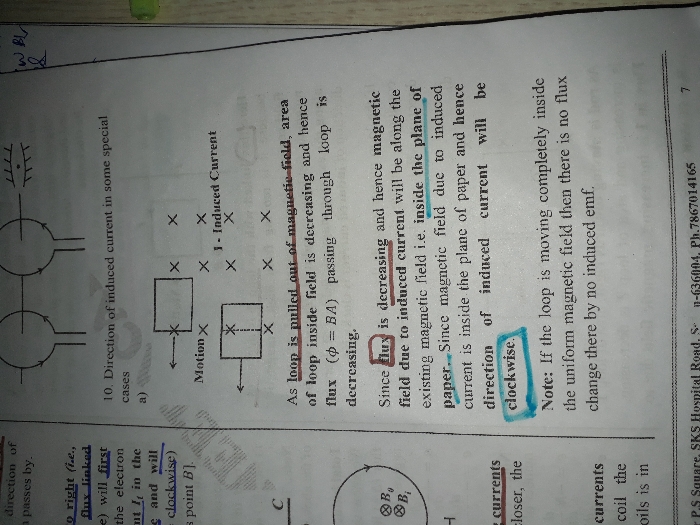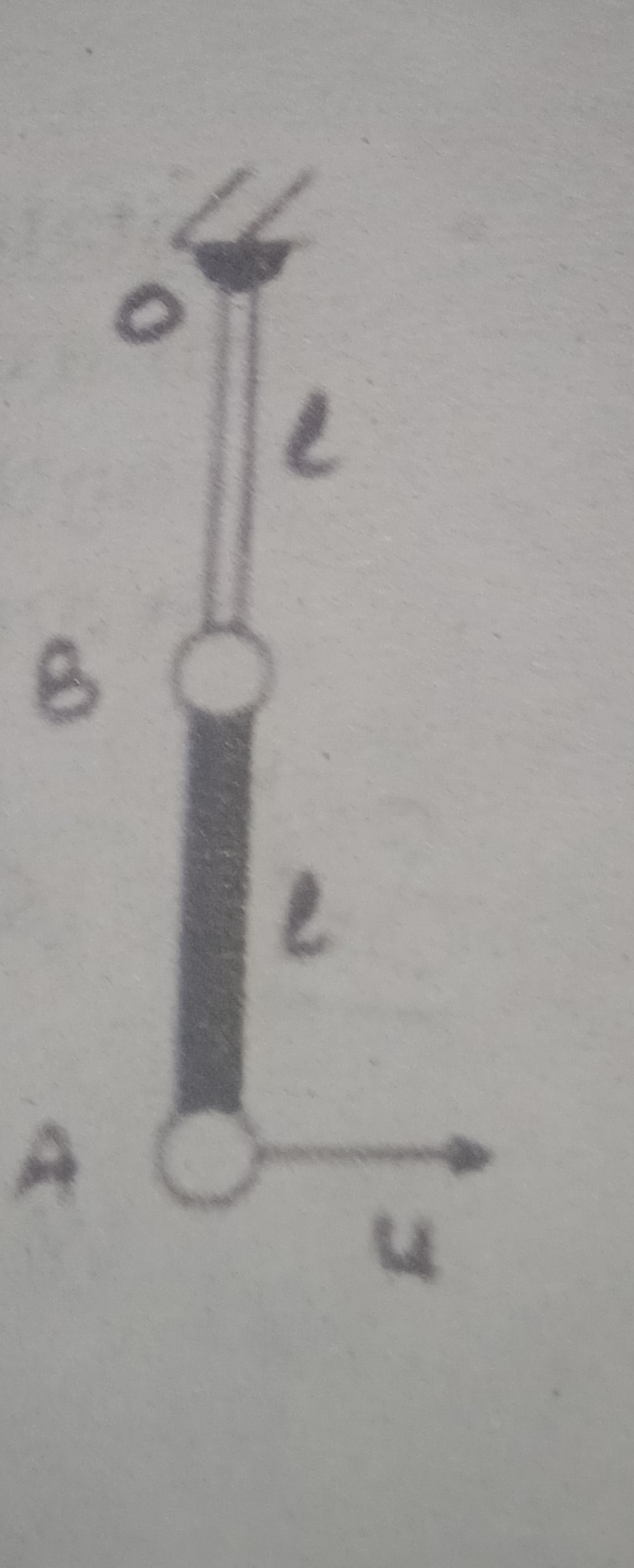CBSE Class 12-science Answered
draw a labelled ray diagram showing imagr formation in compound microscope.define its magnifying power and write expression for it.
Asked by shekharcharen8700 | 07 Dec, 2020, 07:16: PM

A simple microscope has a limited maximum magnification (≤ 9) for realistic focal lengths.
For much larger magnifications, one uses two lenses, one compounding the effect of the other.
This is known as acompound microscope.
A schematic diagram of a compound microscope is shown in above figure.The lens nearest the object,
called the objective,forms a real, inverted, magnified image of the object. This serves as the object for the second lens,
the eyepiece, which functions essentially like a simple microscope or magnifier, produces the final image,
which is enlarged and virtual.The first inverted image is thus near (at or within) the focal plane of the eyepiece,
at a distance appropriate for final image formationat infinity, or a little closer for image formationat the near point.
Clearly, the final image is inverted with respect to the original object.
We now obtain the magnification due to a compound microscope. The ray diagram given in figure shows that
the (linear) magnification mo due to the objective, namely h′/h, equals
 ..................(1)
..................(1)To get magnification mo due to objective as sgiven above, we have used the proprties of similar triangles appearing
between objective lens and first image as given below.

Here h′ is the size of the first image, the object size being h and fo being the focal length of the objective.
The first image is formed near the focal point of the eyepiece. The distance L, i.e., the distance between the
second focal point of the objective and the first focal point of the eyepiece(focal length fe ) is called the
tube length of the compound microscope.
As the first inverted image is near the focal point of the eyepiece, we use the magnification expression for the
simple microscope to obtain the (angular) magnification me .
When the final image is formed at the near point, is

When the final image is formed at infinity, the angular magnificationdue to the eyepiece is

Thus, the total magnification , when the image is formed at infinity, is

Clearly, to achieve a large magnification of a small object (hence the name microscope), the objective and eyepiece
should have small focal lengths.
Answered by Thiyagarajan K | 08 Dec, 2020, 01:47: PM
Concept Videos
CBSE 12-science - Physics
Asked by ankush76728 | 06 May, 2024, 04:52: PM
CBSE 12-science - Physics
Asked by ankush76728 | 05 May, 2024, 09:55: PM
CBSE 12-science - Physics
Asked by heymindurownbusiness | 04 May, 2024, 11:15: AM
CBSE 12-science - Physics
Asked by talulu | 01 May, 2024, 05:14: PM
CBSE 12-science - Physics
Asked by kanishkg511 | 30 Apr, 2024, 07:25: PM
CBSE 12-science - Physics
Asked by sahoobanita89 | 30 Apr, 2024, 05:10: AM
CBSE 12-science - Physics
Asked by divakar.9124 | 27 Apr, 2024, 10:42: PM
CBSE 12-science - Physics
Asked by panneer1766 | 24 Apr, 2024, 01:52: PM
CBSE 12-science - Physics
Asked by artabandhusahu85 | 24 Apr, 2024, 12:07: PM











